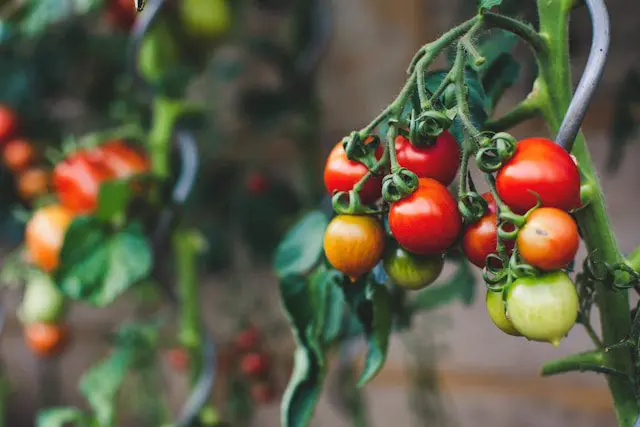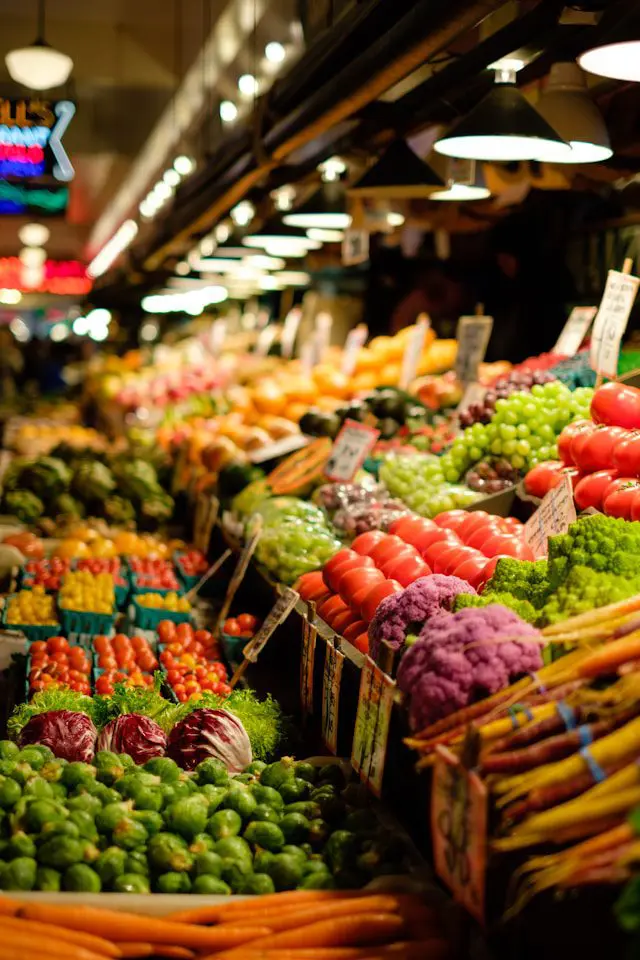In recent years, the food industry has witnessed a significant shift towards health-conscious and environmentally-friendly options. Among these trends, produce that is non-genetically modified, or non-GMO for short, has gained considerable attention. But is this buzz justified? Let’s explore the world of non-GMO produce to understand its implications for our health, environment, and wallets.

Table of Contents
- What Are GMOs?
- Non-GMO vs. GMO vs. Organic: A Comparative Analysis
- Why Are Consumers Choosing Non-GMO Produce?
- Health Benefits of Non-GMO Produce
- Environmental Impact: How Non-GMO Farming Affects Our Planet
- The Economics of Non-GMO Produce: From Farm to Table
- Debunking Common Myths About Non-GMO Produce
- Your Non-GMO Produce Questions Answered
- How to Incorporate Non-GMO Produce Into Your Diet
- The Future of Non-GMO Produce: Trends and Predictions
- Conclusion: Is Non-GMO Produce Worth It?
What Are GMOs?
Before we dive into the non-GMO debate, it’s crucial to understand what GMOs are. Genetically Modified Organisms (GMOs) are plants or animals whose genetic material has been altered using genetic engineering techniques. This technology allows scientists to introduce desirable traits such as pest resistance or drought tolerance into crops. The most common GMO crops include soybeans, corn, and canola, which are often modified to withstand herbicides or to produce insecticide.
Non-GMO produce, by contrast, refers to fruits, vegetables, and grains that have not undergone such genetic modifications. These crops are grown using traditional breeding methods or organic farming practices.
The Evolution of Genetic Modification in Agriculture
Genetic modification in agriculture isn’t a new concept. Humans have been selectively breeding plants and animals for desirable traits for thousands of years. However, modern genetic engineering techniques, which allow for the direct manipulation of an organism’s DNA, only emerged in the 1970s. The first genetically modified food crop, a tomato resistant to rotting, was approved for sale in the United States in 1994.
Non-GMO vs. GMO vs. Organic: A Comparative Analysis
It’s important to note that while all organic produce is non-GMO, not all non-GMO produce is organic. Non-GMO crops can still be grown with conventional farming methods, including the use of synthetic pesticides and fertilizers. Organic farming, which prohibits GMOs, synthetic pesticides, and fertilizers, is often considered the gold standard for consumers seeking natural food options.
Here’s a quick comparison of key characteristics:
| Characteristic | Non-GMO Produce | GMO Produce | Organic Produce |
|---|---|---|---|
| Genetic Modification | No direct DNA manipulation | Contains genes from other species | No genetic modification allowed |
| Pesticide Use | Varies | Often engineered for pest resistance | Limited to approved organic pesticides |
| Yield | Generally lower | Generally higher | Often lower than conventional |
| Cost | Often more expensive | Usually less expensive | Typically most expensive |
| Environmental Impact | Varies | Concerns about biodiversity and herbicide use | Generally more sustainable |
| Nutritional Content | Similar across categories | Similar across categories | Similar across categories |
| Synthetic Fertilizers | Allowed | Allowed | Not allowed |

Why Are Consumers Choosing Non-GMO Produce?
The growing popularity of non-GMO produce stems from several factors:
- Health Concerns: Some consumers worry about potential long-term health effects of consuming GMOs, although the FDA suggests GMOs are safe for consumption.
- Environmental Considerations: There are concerns about the impact of GMO farming on biodiversity and the increased use of herbicides on herbicide-resistant GMO crops.
- Taste and Nutritional Differences: Some people believe non-GMO produce tastes better or is more nutritious, though scientific evidence on this is mixed.
- Ethical and Philosophical Reasons: Some consumers prefer foods they perceive as more “natural” or have concerns about corporate control of the food supply through patented GMO seeds.
Health Benefits of Non-GMO Produce
When it comes to nutritional content, studies have shown little to no significant difference between GMO and non-GMO crops. The health benefits of non-GMO produce are often associated with how they’re grown rather than their non-GMO status itself. The nutritional value of produce is influenced by factors such as soil quality, farming practices, pesticide use, and post-harvest handling.
For instance, non-GMO produce grown organically may have higher levels of certain antioxidants and lower pesticide residues. However, these benefits are more closely tied to organic farming practices than to the absence of genetic modification.
Environmental Impact: How Non-GMO Farming Affects Our Planet
Positives:
- Increased biodiversity in farming systems
- Reduced use of certain herbicides since more care needs to be taken to avoid spraying the crops
- Promotion of more diverse and resilient agricultural ecosystems
Negatives:
- Potentially lower yields, leading to more land use for the same output
- May require more pesticide use for pest control
The overall environmental impact depends largely on the specific farming practices used, rather than the GMO or non-GMO status alone.
The Economics of Non-GMO Produce: From Farm to Table

Non-GMO farmers face several unique challenges:
- Crop Contamination: Pollen from nearby GMO crops can potentially contaminate non-GMO fields, risking the farmer’s non-GMO certification.
- Lower Yields: Non-GMO crops often have lower yields compared to their GMO counterparts, which can impact profitability.
- Pest and Disease Management: Without engineered resistance, non-GMO crops may be more susceptible to pests and diseases, requiring alternative management strategies.
- Market Competition: Competing with the often lower prices of GMO products can be challenging, especially in price-sensitive markets.
- Seed Availability: As GMO seeds become more prevalent, finding high-quality non-GMO seeds for certain crops can be difficult.
- Regulatory Hurdles: Navigating the certification process and maintaining non-GMO status can be complex and time-consuming.
These increased costs are typically passed on to consumers, making non-GMO produce more expensive. Despite these challenges, many farmers have found success in the growing non-GMO market, driven by increasing consumer demand.
Debunking Common Myths About Non-GMO Produce
- Myth: Non-GMO means pesticide-free.
Fact: Non-GMO crops can still be treated with pesticides unless they are also organic. - Myth: Non-GMO crops are more natural.
Fact: Many non-GMO crops still undergo selective breeding and other interventions. - Myth: Non-GMO automatically means better for the environment.
Fact: Environmental impact depends on a range of farming practices, not just GMO status. - Myth: GMOs are always bad.
Fact: GMOs can play a role in improving crop yields and reducing food scarcity in some regions.

Your Non-GMO Produce Questions Answered
How can I identify non-GMO produce at the store?
Look for labels like the Non-GMO Project verified seal. In the United States, this third-party verification has become a recognized symbol for consumers seeking non-GMO options. Remember, organic produce is always non-GMO, so organic certification also guarantees non-GMO status.

Where can I buy non-GMO produce?
Many supermarkets and health food stores now carry non-GMO options, especially in regions with high consumer demand. Stores known for having a wide selection of non-GMO products include:
Additionally, many conventional supermarkets are expanding their non-GMO offerings. Chains like Kroger, Safeway, and Costco have increased their selection of non-GMO products in recent years. Farmers’ markets and Community Supported Agriculture (CSA) programs are also excellent sources.
How to Incorporate Non-GMO Produce Into Your Diet
If you’re interested in incorporating more non-GMO produce into your diet, here are some practical tips:
- Look for Labels: The Non-GMO Project verified label is a reliable indicator of non-GMO status.
- Choose Organic: Remember, organic produce is always non-GMO.
- Shop Local: Many small, local farms grow non-GMO produce. Visit farmers’ markets or join a CSA (Community Supported Agriculture) program.
- Grow Your Own: Consider starting a small garden with non-GMO seeds. The Purely Organic Vegetable Garden Starter Kit is great for both beginners and seasoned gardeners. The kit includes over 3500 certified organic and non-GMO seeds across 9 varieties, complete with biodegradable pots and organic fertilizers.
- Be Informed: Know which crops are commonly genetically modified. In the U.S., these include corn, soybeans, canola, cotton, alfalfa, sugar beets, and papaya.

The Future of Non-GMO Produce: Trends and Predictions
The future of non-GMO produce looks promising, despite the lack of strong scientific evidence for health benefits. This growth is primarily driven by consumer perception and demand rather than scientific backing. Several factors contribute to this trend:
- Consumer Preferences: A significant portion of consumers, particularly in developed countries, prefer what they perceive as “natural” foods. A 2018 survey by the International Food Information Council found that half of Americans avoid GMO foods.
- Health and Wellness Trend: The broader health and wellness movement has boosted interest in organic and non-GMO foods, even without conclusive scientific evidence of health benefits.
- Environmental Concerns: Some consumers choose non-GMO products due to concerns about the environmental impact of GMO farming practices, particularly the use of herbicides on herbicide-resistant crops.
- Government Regulations: Some countries have implemented strict GMO labeling laws or bans, driving demand for non-GMO products.
- Retail and Food Industry Response: Major food companies and retailers are responding to consumer demand by offering more non-GMO options, further fueling market growth.
- Investment in Non-GMO Agriculture: There’s increasing investment in developing high-yield, pest-resistant non-GMO crops to compete with GMO varieties.
Market demand for non-GMO products has been steadily increasing. The global non-GMO food market is projected to grow by up to 16% annually over the next five years, driven by consumer demand for food transparency and eco-friendly agricultural practices.
While scientific evidence doesn’t strongly support health claims for non-GMO produce, the market is responding to consumer demand and perceptions. This trend highlights the complex interplay between science, consumer preferences, and market forces in shaping our food system.

Wrapping Up: Is Non-GMO Produce Worth It?
The question of whether non-GMO produce is “worth it” doesn’t have a one-size-fits-all answer. It depends on your personal values, health concerns, and budget.
If you prioritize environmental sustainability, supporting less chemically dependent agricultural practices, or simply prefer what you perceive as more “natural” food, then non-GMO produce might align well with your values.
However, it’s important to remember that the GMO or non-GMO status of a crop is just one factor in its overall impact on health and the environment. Other factors, such as farming practices, transportation, and processing, also play significant roles.
Ultimately, the most important thing is to eat a varied diet rich in fruits and vegetables, regardless of whether they’re GMO or non-GMO. By staying informed and looking beyond labels, you can make food choices that align with your personal values and contribute to a healthier, more sustainable food system.
We’d love to hear your thoughts! Leave a comment below sharing your experiences or opinions. And don’t forget to subscribe to our Gorilla Gazette newsletter for more informative articles on food, nutrition, and sustainable living. Next, check out easy ways to heal your gut naturally in our comprehensive guide to gut health.


Leave a Reply